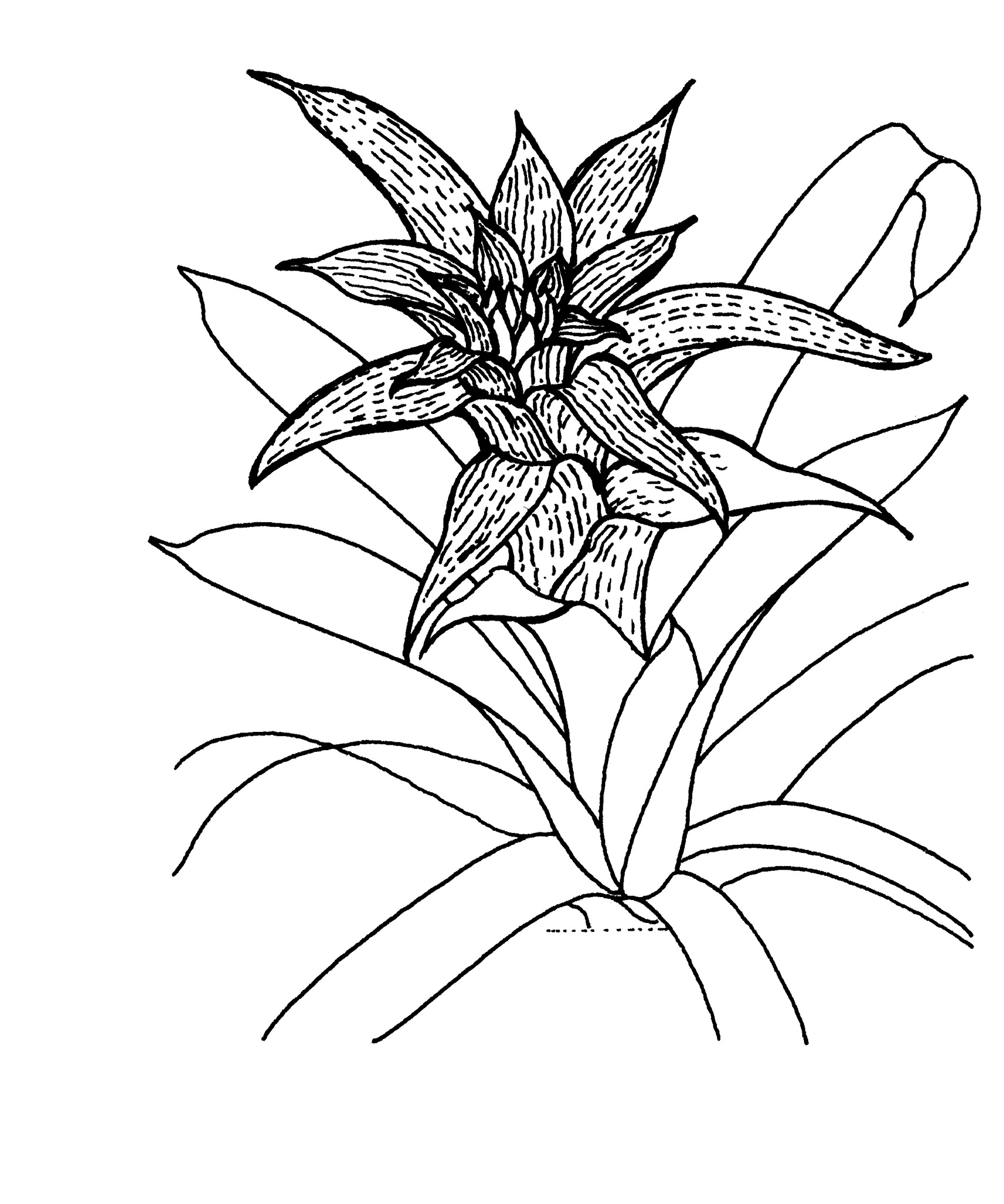
Named after Anastasio Guzman (d. 1802) an eighteenth century Spanish naturalist.
Stemless plants. Leaves densely distributed, entire. Scape usually conspicuous. Inflorescence mostly bipinnate or simple, its branches flowered around the axis; sepals symmetrical; petals with no scales at base, the bottom portion fused into a tube with the blades free. Seed straight and usually brown, hairs at the base.
Few species are in cultivation because of their demanding requirements for successful growth not too hot or cold and with ample moisture, conditions that are difficult to replicate in southern Australia. The non-prickly leaves and long lasting inflorescence are features that cause these plants to be sought after as short term indoor plants in Europe and North America, where they are disposed of once flowering is finished. Guzmania lingulata and G. wittmackii, or more likely hybrids between the two, are available in cultivation and are fairly hardy. Perhaps the easiest to grow is G. monostachia.
Seed or offsets.
Leaves entire; corolla radially symmetric; flowers in many ranks; bases of petals united into a tube no longer than the sepals.
There are approximately 167 species which come from high altitude tropical areas of North and South America.
Source: (2005). Bromeliaceae. In: . Horticultural Flora of South-eastern Australia. Volume 5. Flowering plants. Monocotyledons. The identification of garden and cultivated plants. University of New South Wales Press.
